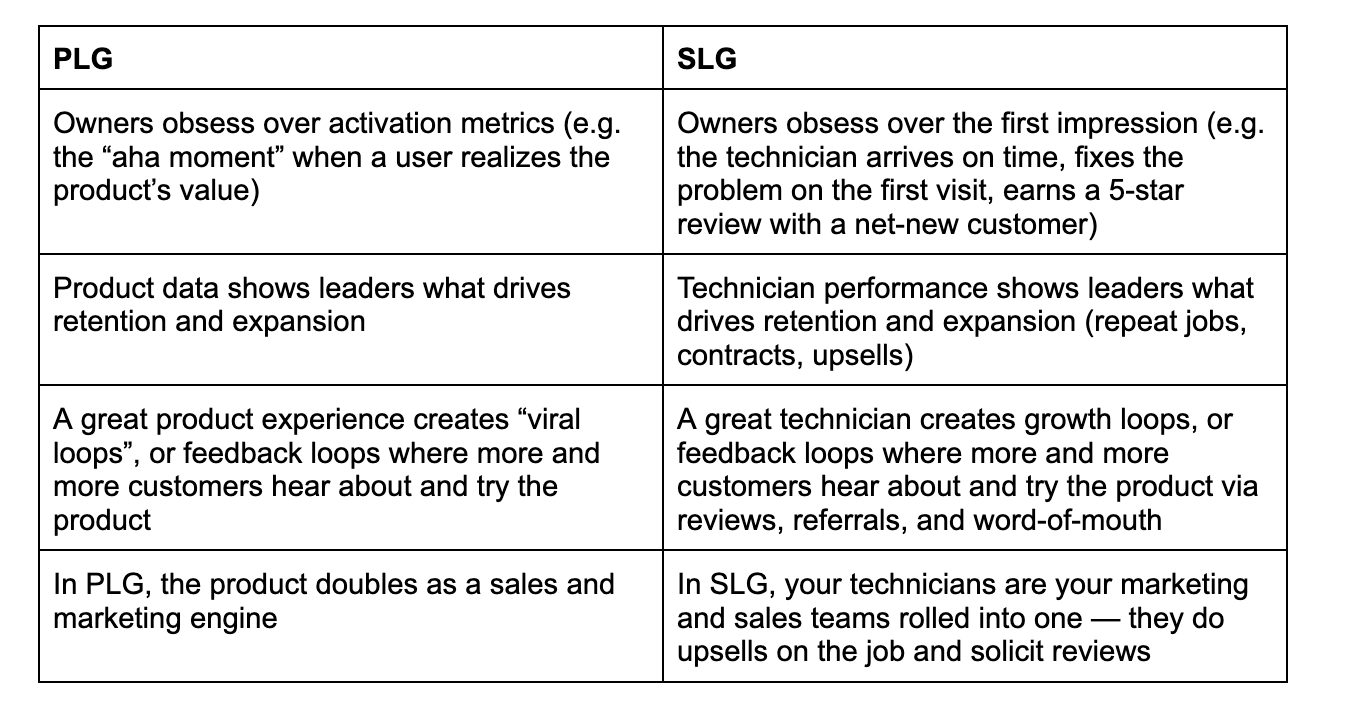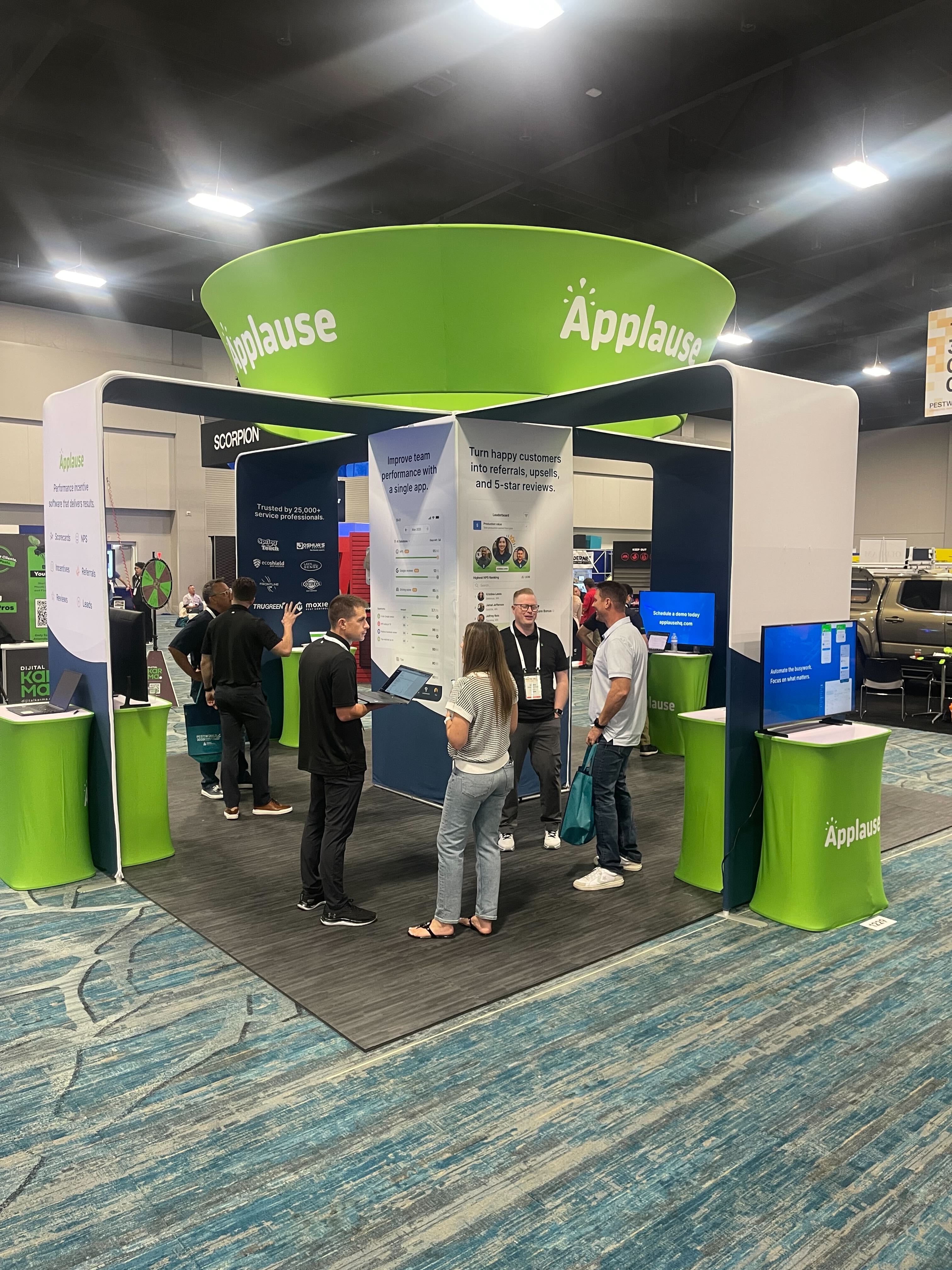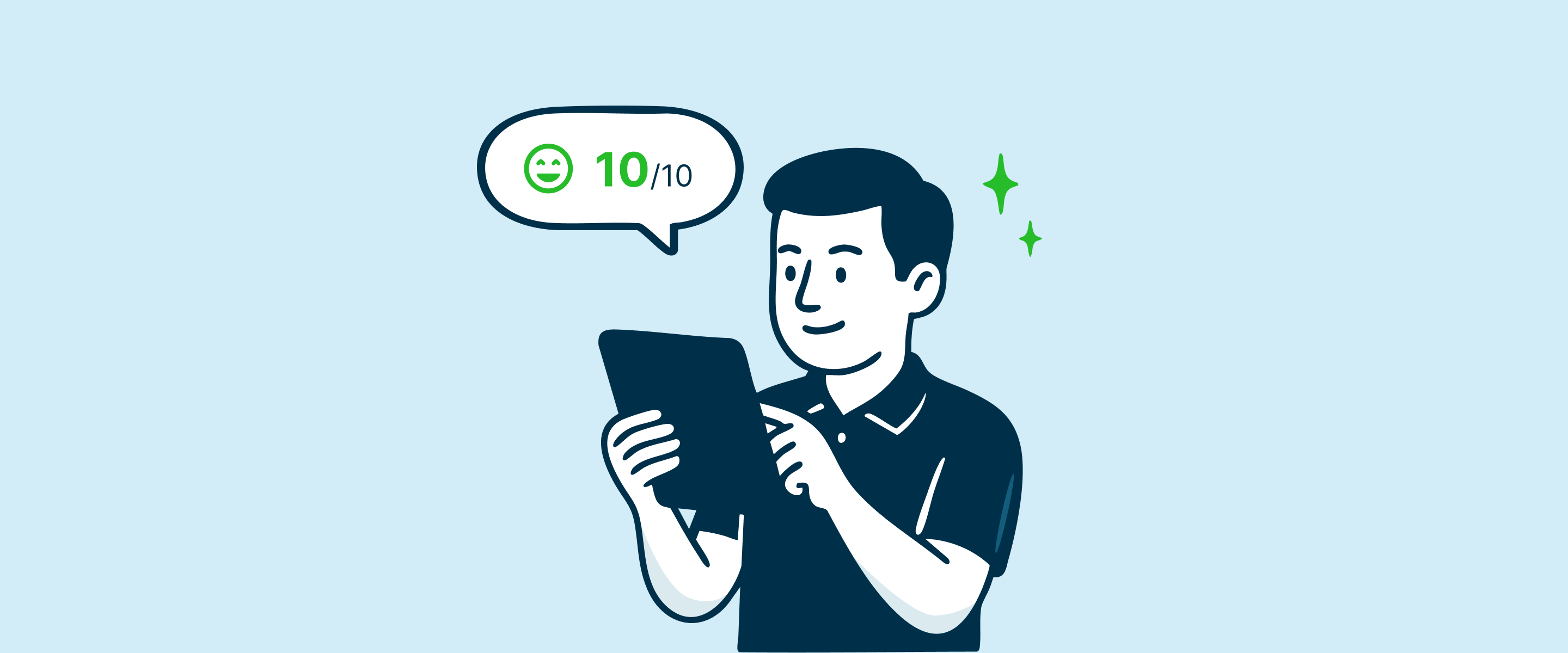Over the last decade or so, some of the most-loved software companies have used product-led growth (PLG) to grow faster and more efficiently than their competitors. Facebook, Dropbox, Slack, and countless others grew by developing products so addictively good and easy to use that their customers simply couldn’t imagine life without them.
These behemoth companies didn’t rely on sales or marketing to win over new users. Instead, they relied on their engineers and product teams to create something so valuable, customers would be crazy to leave.
Right now, many field and home services companies rely on large, exceptionally persistent fleets of salespeople to win new business. It’s not a bad strategy at first; it does get customers in the door. But it doesn’t necessarily keep them. And winning a customer for life is a lot more valuable than winning hundreds for a single job.
Instead of relying on sales or marketing to win new business, field and home services companies should take a page out of Dropbox’s book and implement a version of PLG. Except here, the product isn’t software. It’s the technician in the customer’s home.
In field services, technician performance is company performance. Every job is a growth opportunity or a churn event. And in an industry where any customer can easily leave a helpful or hurtful review in seconds, SLG is the only growth model that works.
What is service-led growth (SLG)?
At its core, product-led growth is pretty intuitive: it’s a growth model where your product is what brings in new business. In a product-led growth model, software companies:
- Make it really easy for anyone to try their product
- Focus on perfecting their product such that it acquires and retains customers just by being useful and easy to use
Basically, instead of telling prospects why the product is great, you let them experience it firsthand.
Service-led growth applies the same principle to field and home services businesses.
In this model, the technician is the product. Technician performance directly determines whether a customer leaves a five-star review, refers friends, stays loyal for years, or churns after one bad experience. So as a manager or business owner, technician performance becomes a core business metric.
Here are a few ways SLG is basically PLG, but for field and home services:

Every technician interaction compounds, for better or worse.
And every job is an opportunity to:
- Deliver a seamless, professional experience.
- Earn trust through competence, communication, and timeliness.
- Generate future revenue through upsells, maintenance plans, or recurring contracts.
- Create free marketing through reviews and word-of-mouth.
When technicians consistently deliver five-star service, growth becomes compounding and exponential.
The inverse is also true: poor technician performance erodes trust, tanks reviews, and drives churn. Just like bad software usage leads to uninstalls, bad service experiences will spell trouble long-term.
How to implement an SLG model
SLG companies win by relentlessly improving their technicians.
Building an SLG motion requires the same discipline PLG companies use to refine their product: precise tracking, structured incentives, and constant iteration. Here’s how home services leaders can implement SLG.
Track technician-level performance
Most businesses measure success at the company level (revenue, profit margins, churn). SLG leaders drill down deeper. They measure technician-level metrics like:
- Customer NPS or satisfaction score
- First-time fix rate
- Average time on-site
- Review count and star rating
- Reservice frequency
This data becomes the equivalent of SaaS “product analytics.” It shows where the real growth levers are hidden.
Create transparency and healthy competition
Just like PLG teams publish dashboards showing product usage, SLG leaders should make technician performance visible to all technicians. Transparent scorecards create accountability and spark healthy intra-team competition.
Deploy real-time incentives
In PLG, growth loops reward users for sharing the product. In SLG, instant recognition and incentives reward technicians for high performance, whether that’s earning a five-star review, completing a job efficiently, or upselling a maintenance plan.
Surface trends and coach continuously
Analytics without action is a waste. Leaders should use technician data to identify coaching opportunities, spot trends across branches, and invest in training that lifts the floor for everyone.
Scale what works across branches
Just as successful PLG companies replicate product-led playbooks across markets, SLG companies should take what works and multiply them across every team and location.
Find the top performers, the top coaches, and the incentive structures that work and invest in bringing that level of excellence to every team and location across your business.
Why the winners will employ SLG
In home services, the winners will be those who build the best technicians and let those technicians drive growth. It’s an incredibly straightforward way to grow a business, and it makes all the sense in the world. But it’s less glamorous than other growth strategies, and it requires upfront investment in your team.
That might be why many companies aren’t taking this tack. They’re hiring big sales teams and pouring money into ads and promotions. Those tactics may buy you customers, but they come with serious drawbacks:
- Sales-led growth is expensive. Every new dollar of revenue depends on adding more reps, more commissions, and more overhead. And if the service itself isn’t strong, those customers churn. You’re paying top dollar to fill a leaky bucket.
- Marketing-led growth is flimsy. You can spend on mailers, digital ads, and promotions to drive jobs, but if customers have a bad service experience, the campaign’s ROI just isn’t there. Ads may buy you a first impression, but only service earns you loyalty.
Sales and marketing are powerful engines for amplifying growth, but they aren’t a good replacement for great service. You won’t see long-term, sustainable ROI from these efforts until your technicians are operating at the top of their game consistently.
Moreover, service-led growth builds in a way these other models can’t. Every high-performing technician creates loops — reviews, referrals, repeat jobs — that generate growth at zero marginal cost. Instead of constantly buying the next customer, you’re building a machine that feeds itself.
That’s why SLG is the only sustainable business model for field and home services companies that want long-lasting growth, stronger margins, and a brand that builds fans over time.
If you want to start your SLG engine today, the first thing you’ll need is an insanely simple way to track and reward technician performance automatically.
Chat with our team to see how Applause can drive business growth for you.

.svg)
.jpg)




.jpg)
.png)



.webp)